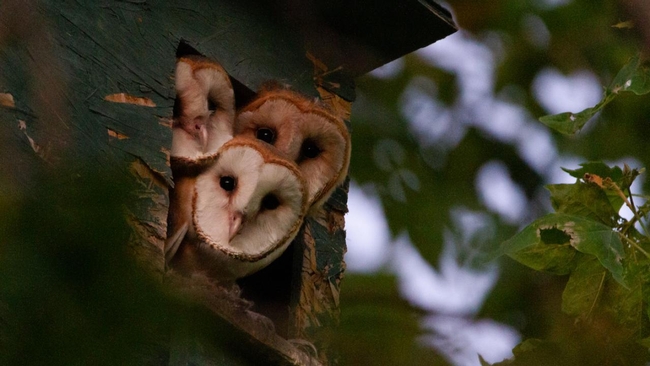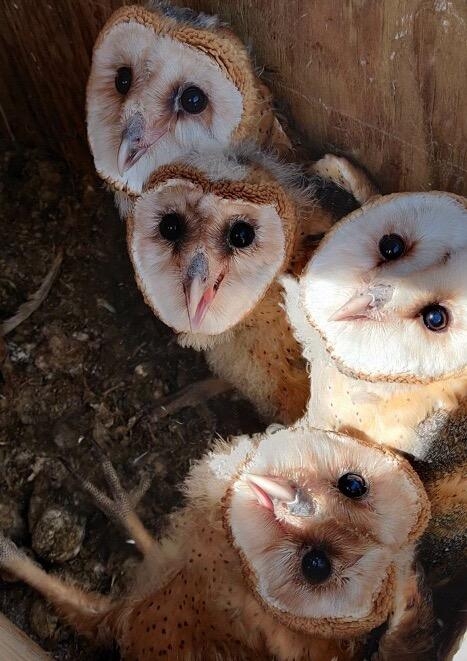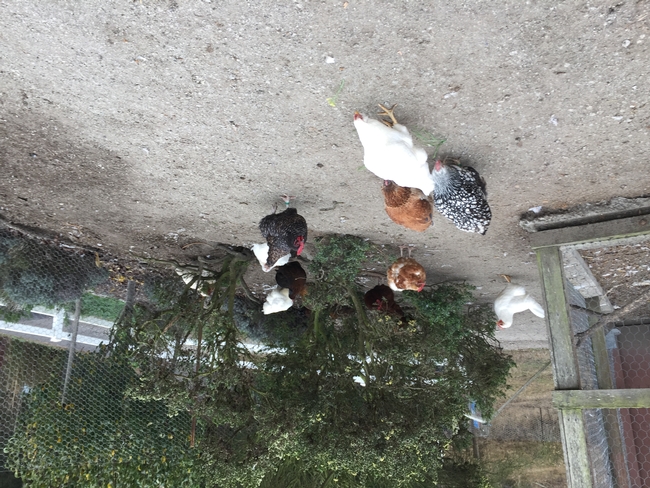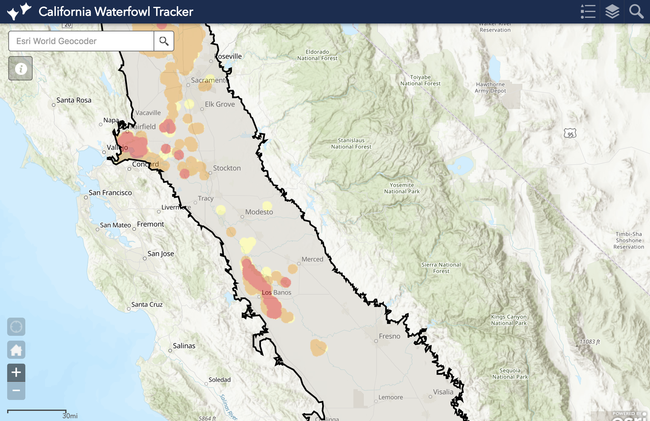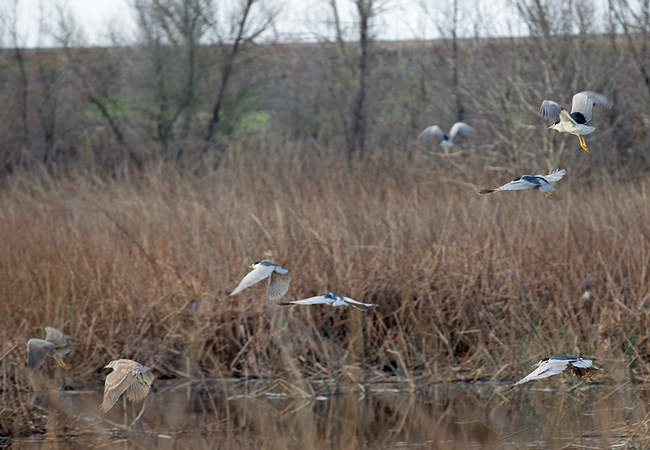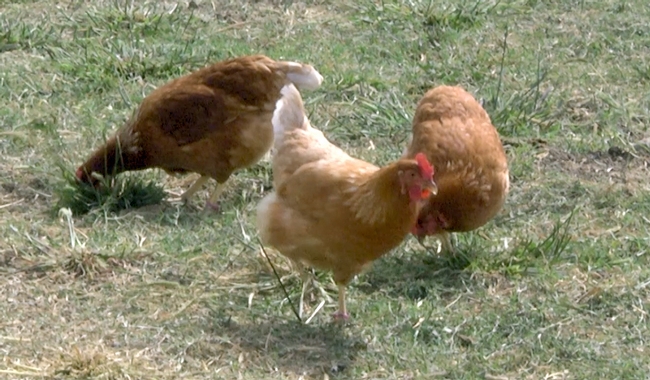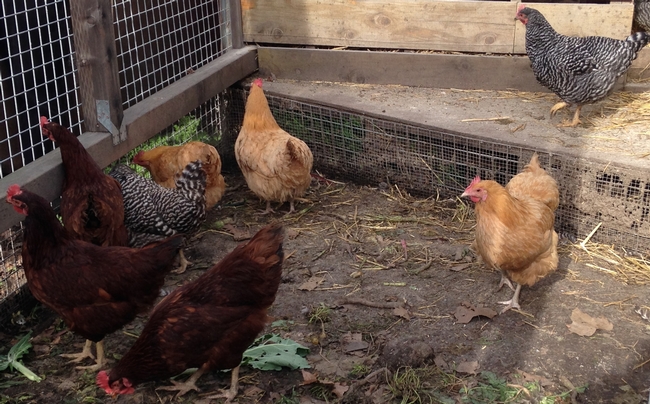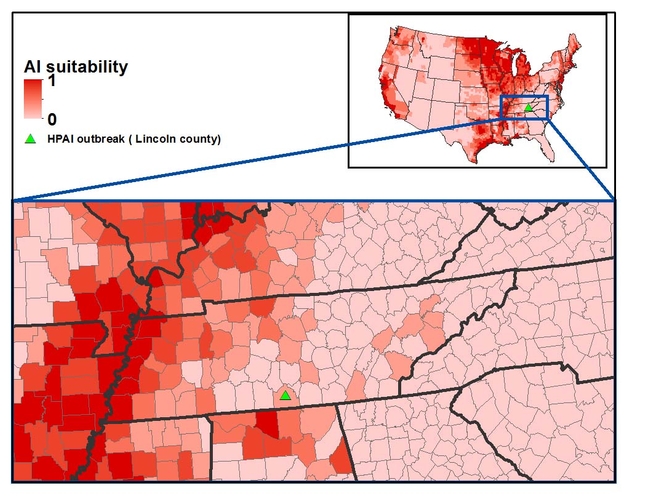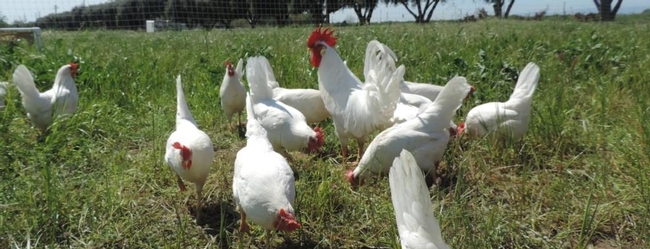
Posts Tagged: avian
Fall is best time to clean nest boxes for barn owls
Research shows land managers should clean nest boxes in autumn to avoid disturbing the raptors
When it comes to American barn owls, forget spring cleaning.
The best time of year to clean out nest boxes to ready them for breeding pairs is the fall months of September through November, according to research out of the University of California, Davis, that analyzed nearly a century of banding and other records.
In a paper published in the Journal of Wildlife Management, researchers found that the median egg laying date for barn owls (Tyto furcata) in California is Feb. 20, so cleaning nest boxes in the fall is recommended.
“The risk is you could disrupt a nest that has already started,” said lead author Ryan Bourbour, a Ph.D. candidate in ecology in the Department of Animal Science at the time of the study. “We want to reduce disturbances to nesting pairs even in the weeks prior to egg laying.”
American barn owls offer a natural way for land managers and agricultural operations to control pests, because the raptors eat mice, gophers and rats. One breeding pair can consume up to 2,000 rodents annually, according to the UC Davis School of Veterinary Medicine.
But natural tree cavities and old barn structures are not as plentiful as they once were, so installing nest boxes can attract the barn owls. And land managers who spend money installing these “nest box networks” have long asked about the best time of year to do maintenance and cleaning. Planning cleaning and maintenance well before the start of the breeding season is “part of making that nest box worthwhile,” Bourbour said.
Pellets add up
After eggs hatch, nestlings spend their early days eating and living in the nest boxes until they are able to leave the nest, said Breanna Martinico, another paper author and an animal science Ph.D. candidate in ecology.
The nestling period of roughly 65 days is considered long.
“That's two months where owls are living and growing exclusively in that nest box,” said Martinico, who is also a UC Cooperative Extension human-wildlife interactions advisor in Napa, Lake and Solano counties.
As many as five or six nestlings are typically in a box, and they eat up to four or five rodents each day. Nestlings swallow their prey whole, and what isn't digested — fur and bones — is coughed up in round or oval-like pellets.
“They're in there for seven to eight weeks just regurgitating these pellets,” Bourbour said. “A lot of pellets pile up over the course of a breeding season and a lot of these boxes need to be cleaned out.”
From anecdotal to data
Discussions about how early the breeding season starts have mostly been anecdotal. To get a better picture, the paper's authors analyzed 96 years of banding records from the United States Geological Survey Bird Banding Lab and 39 years of intake records from California Raptor Center at UC Davis. Both databases helped them estimate the typical egg laying time of year in California, Martinico said.
Having this information can help land managers ensure maintenance is done and nest boxes are safe for the next breeding pair, helping barn owl populations while also benefiting agricultural operations.
“We can give them tools to manage barn owl nest box networks effectively and maximize pest control through owls,” Martinico said.
Additional co-authors include Emily Phillips, Jessica Schlarbaum and Joshua Hull in the Department of Animal Science, Michelle Hawkins in the Department of Medicine and Epidemiology at the UC Davis School of Veterinary Medicine and Sara Kross from Columbia University.
Funding came from the National Institute of Food and Agriculture's Western Sustainable Agriculture Research and Education program.
The journal article is entitled Banding records of nestling barn owls reveal optimal timing for nest box maintenance in California.
Poultry owners urged to protect birds from avian influenza virus
A strain of highly pathogenic avian influenza is currently infecting and killing wild birds and domestic birds in at least 29 states across the United States.
A UC Agriculture and Natural Resources poultry expert urges commercial and backyard chicken owners to take precautions.
“When it comes to protecting your flock, there is no treatment for HPAI so the best thing you can do is focus on biosecurity,” said Maurice Pitesky, UC Cooperative Extension poultry specialist in the School of Veterinary Medicine at UC Davis.
“In order to protect our commercial and backyard chickens, it is essential for all of us who own poultry to do our part,” he said.
The current avian influenza outbreak is already considered the worst bird flu outbreak since the 2015 HPAI outbreak when nearly 50 million poultry were euthanized or died.
The HPAI virus is being spread by migrating birds and California is part of the Pacific migratory flyway.
“Waterfowl migrate thousands of miles between wintering and breeding locations and have long been known to be the natural reservoirs for avian influenza viruses, which are associated with high mortality in poultry,” Pitesky explained. “Many of these migrating ducks, geese and swans winter in the relatively warmer climate of California's Central Valley among other locations where they can find appropriate habitat.”
Pitesky recommends preventing chickens and other poultry from exposure to waterfowl and other potential wild bird carriers.
“At the most generic level, that means making sure your birds are separated from any wildlife,” he said. “Whether you have a million-bird farm or just a few backyard chickens, the message is the same: maintain the best biosecurity you can, which includes fencing and make sure you reduce reasons for waterfowl to come near your birds such as spilled feed and ponding of water.
“Our previous research has shown that waterfowl are attracted to both natural and human-made wetlands and lagoons. So, if you live near one of these types of habitats, your biosecurity efforts are even more important.”
The HPAI virus does not currently affect humans. Pitesky said it is important to recognize that avian influenza viruses, like all viruses, can mutate or recombine to form new versions of virus that may affect humans.
For more information on biosecurity and where HPAI has been identified in the U.S., please visit the UC Cooperative Extension poultry website at https://ucanr.edu/sites/poultry/Resources_335/HPAI.
Poultry owners who have questions may reach Pitesky at mepitesky@ucdavis.edu.
New California Waterfowl Tracker website launched to help poultry producers assess bird flu risk
To reduce potential exposure to avian influenza, a new interactive website is now available to help California poultry producers, backyard poultry enthusiasts, regulators and risk managers assess the locations of waterfowl relative to poultry farms in the Central Valley.
While not all waterfowl carry avian influenza, the migratory birds are the primary reservoir of the virus that kills chickens, turkeys and other birds and can take an economic toll on the poultry industry. During an outbreak of a highly pathogenic strain of avian influenza in 2014-15, nearly 50 million birds had to be killed to contain the disease in the United States.
“Avian influenza is such a devastating disease, in an abundance of caution, we want to limit any interaction between waterfowl and domestic poultry,” said Maurice Pitesky, UC Cooperative Extension poultry specialist.
The California Waterfowl Tracker has been developed by Pitesky at the School of Veterinary Medicine at UC Davis, the University of Delaware, U.S. Geological Survey and UC Agriculture and Natural Resources to show where waterfowl are.
From September through March, geese, ducks and other waterfowl migrate by the millions via the Pacific Flyway and winter in California wetlands, rice and corn fields. At the height of migration, the Central Valley is home to 3 million waterfowl.
The Central Valley is also home to the majority of the state's commercial egg-laying hens, broiler chickens and turkey flocks.
Using the web app to understand when and where waterfowl are feeding and roosting, poultry farm managers and other stakeholders will be able to consider waterfowl in their decision making. They may decide to place pasture-raised poultry in a region of the state that has less wetlands, such as Fresno. If a large number of Canada geese take up residence nearby, poultry owners may decide to move their domestic birds indoors to reduce their exposure until the migrating waterfowl move on.
Using a machine-learning approach developed by Jeff Buler, University of Delaware wildlife ecology professor, the web app produces a waterfowl density map of California's Central Valley that is automatically updated daily with both satellite and weather station information.
“The model doesn't tell us whether waterfowl are carrying avian influenza, but it helps poultry producers and regulators understand where those interfaces could happen,” Pitesky said.
Additional waterfowl habitat and next-generation radar analysis of waterfowl are integrated into the web app. Users can search one or more addresses to anticipate their farms' interaction with waterfowl. Based on the proximity of waterfowl and wild bird monitoring information from the U.S. Fish and Wildlife Service, poultry owners can make biosecurity decisions.
“While the current version of the website is designed for California, the long-term goal is to develop and expand this system for the continental U.S. to promote health and safety of poultry flocks nationally,” Pitesky said.
To use the California Waterfowl Tracker, visit the UC Cooperative Extension Poultry website http://ucanr.edu/sites/poultry. A video of Pitesky demonstrating how to use the web app can be viewed at https://youtu.be/EOO0Q_ggZ9I.
Poultry producers who would like to be notified by UC Cooperative Extension if there is an avian influenza outbreak in their area can sign up on the California Poultry Census page at http://ucanr.edu/sites/poultry/California_Poultry_Census.
Protect your poultry from avian flu
University of California poultry experts are urging poultry owners to examine biosecurity for their flocks after avian influenza was confirmed in commercial chickens in Tennessee by the USDA Animal and Plant Health Inspection Service on Sunday (March 5). To protect the birds' health, UC scientists recommend taking measures to prevent poultry from coming into contact with wild birds.
"Based on the initial sequence of the virus, the source of the virus is thought to be waterfowl, said Maurice Pitesky, UC Cooperative Extension poultry specialist in the School of Veterinary Medicine at UC Davis. “This is consistent with the current understanding of how avian influenza spreads and evolves. Specifically, juveniles are infected at breeding locations and travel south in the fall carrying virus. As the waterfowl move southward, they are more likely to interact with other species, increasing the risk of interspecies transmission and formation of new varieties of avian influenza.”
The case in Lincoln County, Tenn., is the first report of highly pathogenic H7 avian influenza in commercial poultry in the United States this year. The flock of 73,500 affected chickens is located within the Mississippi Flyway, one of four North American flyways for migratory birds.
“Lincoln County is located in one of the medium-high risk areas that were identified by our risk map, said Beatriz Martínez López, director of the Center for Animal Disease Modeling and Surveillance in the School of Veterinary Medicine at UC Davis.
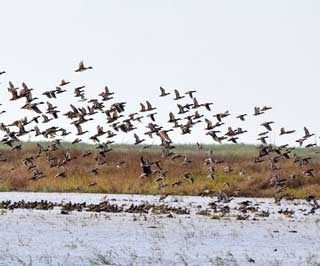
“We need to increase awareness of poultry producers to maximize the biosecurity implemented in their operations, particularly in those located in high risk areas, mainly farms that are in close proximity to wetlands or other wild bird feeding and resting areas,” said Martínez López.
Poultry owners can identify biosecurity strengths and weaknesses for their own farm or backyard flock by filling out a free survey designed by Martínez López and other poultry experts. People who raise chickens, quail, ducks, turkeys, geese or other birds anywhere in the United States are invited to use the resource. At the end of the survey, participants receive specific research-based recommendations of biosecurity measures they can apply on their own types of farms. The poultry biosecurity survey is available in English http://bit.ly/2kkMycf and Spanish http://bit.ly/2mjO13G. The survey takes 15 to 20 minutes to complete and will be open until June 1.
If you would like UC Cooperative Extension to notify you if there is an avian influenza outbreak in your area, sign up on the California Poultry Census page: http://ucanr.edu/sites/poultry/California_Poultry_Census.
Owners of backyard chickens who observe illness or increased mortality among their birds should call their veterinarian or the California Department of Food Agriculture sick bird hotline at (866) 922-BIRD (2473).
For more information about raising poultry, visit http://ucanr.edu/sites/poultry.
Are your birds safe from avian influenza?
Are your birds safe from avian influenza?
Take UC's biosecurity survey to see how you score
Outbreaks of highly pathogenic avian influenza in January 2017 killed birds at commercial poultry farms and backyard flocks in the UK, China and South Korea. Thousands more ducks, chickens and other birds were culled to contain the disease. The outbreaks are spurring University of California scientists to develop more safeguards to protect U.S. poultry from avian influenza.
To prevent outbreaks of this highly contagious virus in the United States, commercial and backyard poultry owners are being asked to fill out an online biosecurity survey. UC Agriculture and Natural Resources and UC Davis researchers are studying poultry-raising practices to help strengthen the industry's defenses against avian influenza.
"With changing migration patterns of wild birds and global movements of poultry, there is an urgent need to develop plans to protect U.S. poultry against highly pathogenic avian influenza," said Beatriz Martínez López, director of the Center for Animal Disease Modeling and Surveillance in the School of Veterinary Medicine at UC Davis.
People who raise chickens, quail, ducks, turkeys, geese or other birds anywhere in the United States are invited to fill out the survey.
"We want to hear from all poultry producers: from the large commercial farms producing chicken eggs to the poultry enthusiasts who raise a few ornamental show birds in their backyards," said Martínez López, who is part of the University of California's Agricultural Experiment Station.
The survey asks which bird species are being raised and a few flock management questions. Is the flock is housed or kept outdoors? How often do you get new birds? What is the source of new birds? It also asks questions about location, such as the distance of the birds from ponds and other bodies of water that may attract migrating waterfowl.
Immediately after completing the online survey, participants receive a biosecurity score and recommendations to help them make more informed decisions.
"Each producer will receive their own biosecurity score and customized recommendations," Martínez López said. "Recommendations highly depend on the production system and we tried to adapt them to make the changes easier to implement for individual flocks."
The survey data will be confidential and only summaries will be made publicly available in research reports and peer-reviewed publications.
By analyzing biosecurity and management practices on poultry operations and backyard flocks, Martínez López and visiting professor Sharmin Chowdhury will be able to identify high-risk locations and time periods for avian flu outbreaks. The information will be used to develop biosecurity education programs for poultry farmers, backyard producers and poultry veterinarians.
The survey takes about 15-20 minutes to complete. To participate, visit http://bit.ly/2kkMycf by March 1.
This study is funded by Agriculture and Food Research Initiative Competitive Grant no. 2015–09118 from the USDA National Institute of Food and Agriculture.
MEDIA CONTACT:
Beatriz Martinez López, DVM, beamartinezlopez@ucdavis.edu, (530)752-7675.
UC Agriculture and Natural Resources researchers and educators draw on local expertise to conduct agricultural, environmental, economic, youth development and nutrition research that helps California thrive. Learn more at ucanr.edu.

